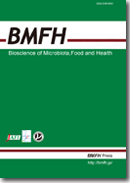Volume 35, Issue 1
Displaying 1-6 of 6 articles from this issue
- |<
- <
- 1
- >
- >|
Full Paper
-
2016 Volume 35 Issue 1 Pages 1-7
Published: 2016
Released on J-STAGE: January 30, 2016
Advance online publication: August 25, 2015Download PDF (956K) -
2016 Volume 35 Issue 1 Pages 9-17
Published: 2016
Released on J-STAGE: January 30, 2016
Advance online publication: September 26, 2015Download PDF (743K) -
2016 Volume 35 Issue 1 Pages 19-27
Published: 2016
Released on J-STAGE: January 30, 2016
Advance online publication: September 26, 2015Download PDF (1214K) -
2016 Volume 35 Issue 1 Pages 29-39
Published: 2016
Released on J-STAGE: January 30, 2016
Advance online publication: October 27, 2015Download PDF (1425K)
Note
-
2016 Volume 35 Issue 1 Pages 41-49
Published: 2016
Released on J-STAGE: January 30, 2016
Advance online publication: October 06, 2015Download PDF (1233K) -
2016 Volume 35 Issue 1 Pages 51-55
Published: 2016
Released on J-STAGE: January 30, 2016
Advance online publication: October 06, 2015Download PDF (676K)
- |<
- <
- 1
- >
- >|
